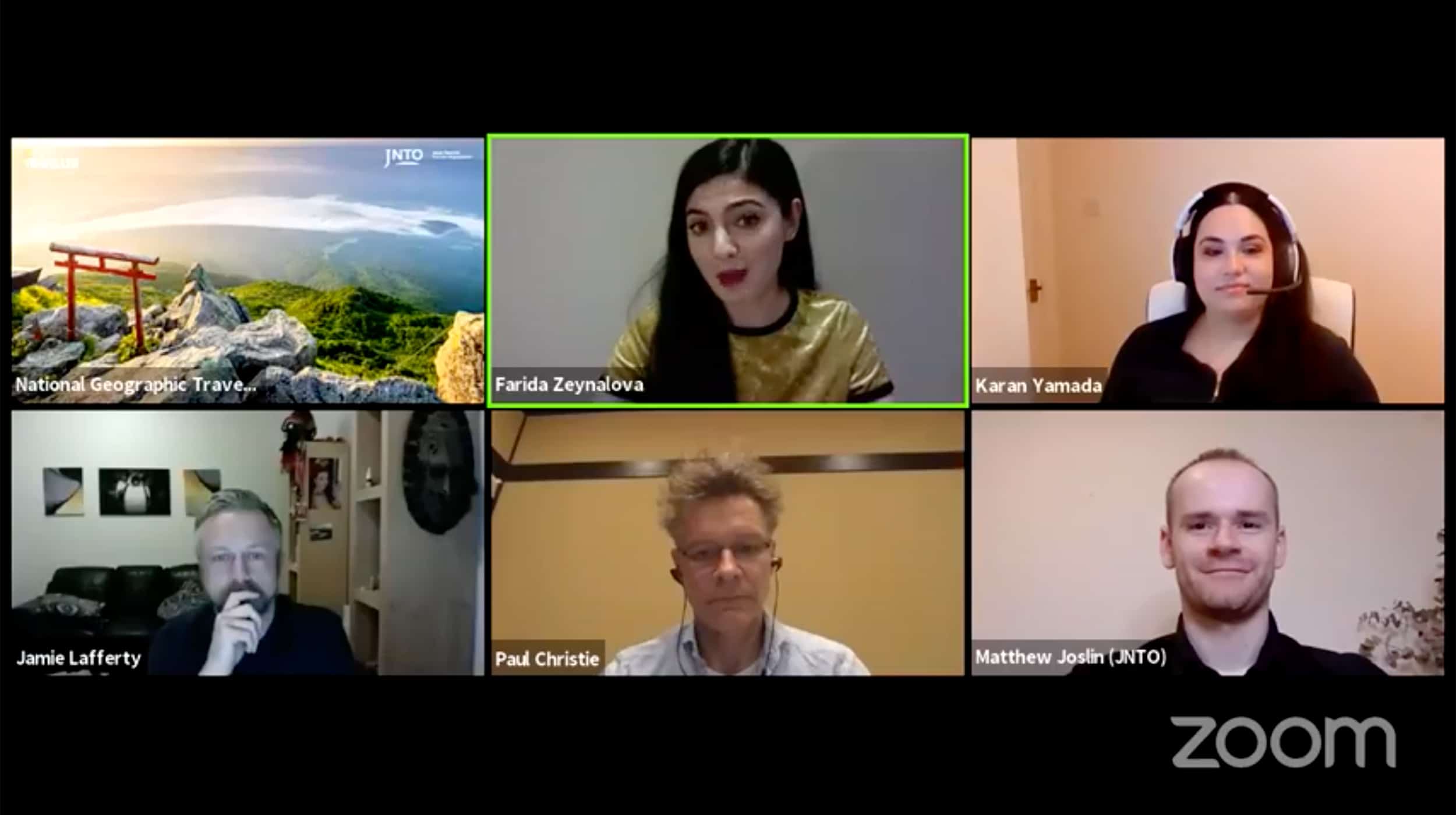
Seven things we learned from Travel Geeks — exploring rural Japan
On 23 March, National Geographic Traveller (UK) hosted Travel Geeks — exploring rural Japan, an online event sponsored by the Japan National Tourism Organization (JNTO) to discover the Japanese countryside virtually. An expert panel, with Karan Yamada from Into Japan Specialist Tours, Walk Japan CEO Paul Christie, travel writer Jamie Lafferty and Matthew Joslin, marketing and communications manager at JNTO, talked to National Geographic Traveller Food assistant editor Farida Zeynalova about the adventures to be had beyond the classic ‘golden route’, especially in the remote Tohoku region. Here are some of the key things we learned
1 Rural Japan is authentic
If you go to rural Japan, you can see the true beauty of the country and better understand what Japanese people are really like. “The rural side of things is very different,” said Jamie. “You’re more likely to need a guide, it’s less ready for tourists, but in that you have a sense of exclusivity. You get to do things that not many people do these days.”
2 It’s also incredibly diverse
Since Japan has iconic cities like Tokyo, Kyoto and Sapporo, people don’t realise just how much of it is natural and wild: about 75 per cent of the country is classed as mountainous, which means the whole terrain can change dramatically from one valley to another. “Japan is full of different cultures,” said Paul. “Of course, there’s an overwhelming sense of Japan, but within each region, and even between valleys, there can be a quite different food culture, dialect and way people behave.”
3 If you visit Tohoku, you can take the slow path…
A great way to discover Tohoku is to set off on the long-distance Michinoku Coastal Trail, which follows the Pacific coast from Hachinohe City in Aomori Prefecture to Soma City in Fukushima Prefecture. “Lots of money has gone into making sure that anyone who wanted to go would find it relatively easy to travel, whether they speak Japanese or not,” said Paul. What’s more, the itinerary, built after the triple disaster of 2011, features recommendations from local communities, Matthew added.
4 … or the fast route
For those who don’t feel like walking more than 600 miles, there are other options. Despite being so remote and wild, Tohoku has great infrastructure and is easily accessible from Tokyo. There’s a bullet train line that runs through the region, which is an economical way of getting around, said Karan. If you’re a return visitor, a self-drive can get you to harder-to-reach places, with a new express way opening this year, explained Matthew. But whatever you do make sure to ride the smaller local trains, said Paul. “They’re a delightful way of exploring, and the views from the windows are tremendous,” he added.
5 Tohoku has a folkloric character
With religions like Buddhism and Shinto, Japanese spirituality is very much connected to nature. Tohoku used to be considered the wild savage north and the clash of its raw wilderness with Japanese civilisation gave rise to interesting cultural traditions, said Matthew. “The thin line between urban civilisation and untamed nature was fertile ground for the birth of myths, legends and a lot of traditions, which have been passed down [to new generations]”, he explained.
6 The regeneration efforts have been impressive
Just 10 years ago, Tohoku was devastated by one of the biggest natural disasters the world had ever seen. “The scale of the disaster at the time can’t be underplayed, which is why it’s so impressive how far it’s come in 10 years, to be back up and running,” said Matthew. According to him, three things have underpinned the regeneration efforts in the region: a sense of pride from the locals, in their effort to rebuild their home; vitality, evident in the number of initiatives to make the place exciting and interesting for people to visit; and the level of ingenuity that has been born out of the region.
7 Try a Wanko soba challenge
Originating from Iwate Prefecture, Wanko soba is an all-you-can-eat challenge that sees diners gulp down as many small bowls of soba noodles as they can — and, according to Jamie, it’s tons of fun. “Before you tell any local Japanese people that you’ve done it, maybe add 20 or 25 bowls to your real total because they’ll have eaten about 1,000, and I nearly spewed at 40,” he said. “In a country that prides itself on dignity and politeness, it’s an excuse to go absolutely mental at the dinner table.”
Watch the full discussion here: https://fb.watch/4yOBZ1Ph9E/
Click here to see a list of our upcoming events.
If your destination or company is interested in partnering on a future online event, we’d love to discuss any ideas you might have, or help you come up with the best way we can work together.
Contact [email protected] or call 020 7253 9909.
